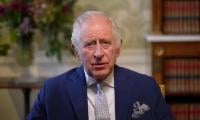Gender disparities in education remain a significant challenge in Pakistan. Despite various initiatives aimed at closing the gender gap, systemic issues continue to hinder equal educational opportunities for girls and boys. According to the Pakistan Economic Survey 2022-23, the overall literacy rate in Pakistan is 62.3%, with a significant gender gap. Male literacy stands at 73%, while female literacy is only 51%. This disparity is even more pronounced in rural areas, where cultural and socio-economic factors further limit girls' access to education. The Annual Status of Education Report (ASER) 2021 highlights that the net enrollment rate for primary education is 61% for boys and only 51% for girls. The gap widens at the secondary level, with 38% of boys enrolled compared to 28% of girls. This drop-off is attributed to various factors, including early marriage, domestic responsibilities, and safety concerns for girls.
Gender disparities in education are more severe in certain regions. For instance, in Balochistan and Khyber Pakhtunkhwa (KP), the enrollment rate for girls is significantly lower than the national average. In Balochistan, the literacy rate for women is just 24%, compared to 56% for men, according to the Pakistan Social and Living Standards Measurement (PSLM) Survey 2019-20.
UNICEF reports that Pakistan has the second-highest number of out-of-school children globally, with 22.8 million children aged 5-16 not attending school. Of these, 12.2 million are girls.
Poverty remains a significant barrier to girls' education. Many families prioritise boys' education when resources are limited, believing that boys will have better job prospects if they get education. Moreover, girls are often expected to contribute to household chores or work to support the family. In many parts of Pakistan, cultural attitudes discourage girls' education. Early marriages, domestic responsibilities, and societal expectations often force girls to leave school prematurely. According to the World Bank, child marriage affects about 21% of girls in Pakistan, significantly impacting their educational attainment.
Safety is a critical issue that discourages many parents from sending their daughters to school. In rural and conflict-affected areas, the risk of harassment and violence is a major deterrent. Many schools, especially in rural areas, lack basic facilities like separate toilets for girls, contributing to high dropout rates. The ASER 2021 report indicates that only 42% of rural schools have proper sanitation facilities. Moreover, the shortage of female teachers, particularly in traditionally -oriented regions, makes it difficult for girls to attend school.
The Government of Pakistan has launched several initiatives to address gender disparities in education. The Punjab Education Sector Reform Program (PESRP) and the Sindh Basic Education Program (SBEP) aim to improve school infrastructure and provide stipends to girls to encourage enrollment and retention. In the last few years, other government funded programs have also included educational stipends for girls to reduce economic burden on families.















